The Republic of Ireland (or Éire in Irish Gaelic), is also called the Emerald Isle due to the national symbol of the Shamrock, which is a type of clover. The Republic of Ireland is filled with castles, ancient history, incredible wild spaces, bustling cities and of course Guinness. Here are 20 must-see landmarks in Ireland for your next trip to the Emerald Isle.
Contents
20 Landmarks in Ireland
Dublin Landmarks
1- Guinness Store House (Co. Dublin)
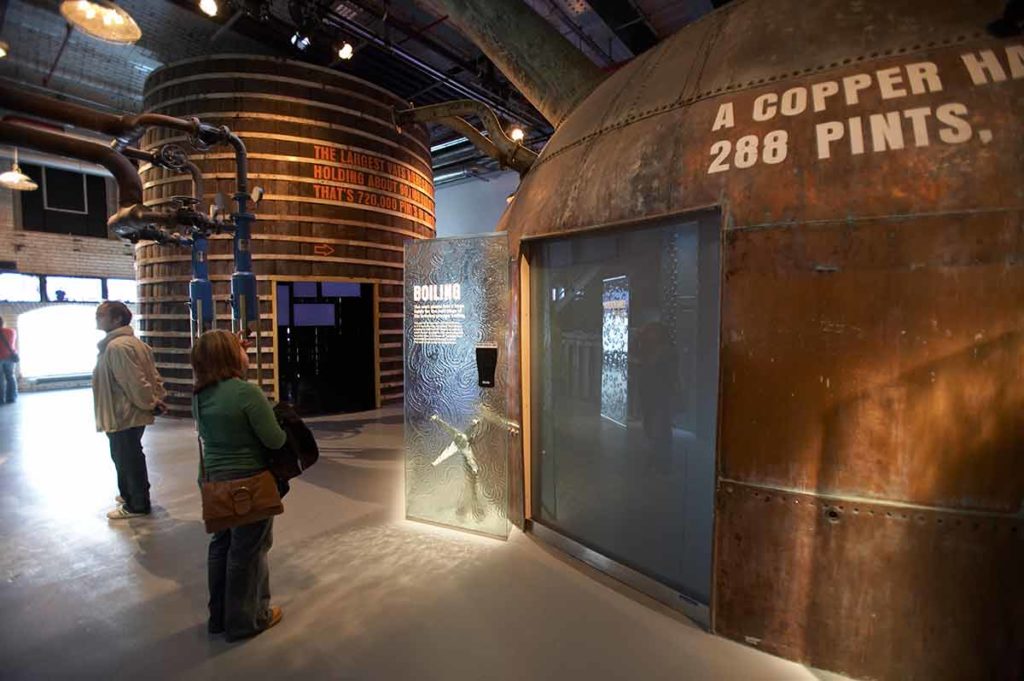
Possibly one of the most famous exports from the Republic of Ireland, Guinness has been brewed in Dublin since 1759.
The ‘black stuff’, as it is fondly known, is still brewed at its original brewery at St James’s Gate.
The storehouse is a Dublin landmark everyone should visit and offers tours of its facilities taking you from ‘the bottom of the worlds largest pint glass’ before moving you through the history of Guinness and the mark it has left on the city and, indeed, the country.
The brewery houses a now world-famous rooftop bar where tour-goers are welcomed with a pint on arrival.
2- The National Museum of Ireland – Archeology (Co. Dublin)
The National Museum of Ireland in Dublin spans over four sites and covers everything from history to architecture and archeology.
One of the biggest attractions to the museum is the archeology wing.
An incredibly beautiful building from the outside, the museum is a Dublin landmark built in the Victorian Palladian style.
It features neo-classical influences in its domed rotunda, which was modelled on the Pantheon in Rome.
Throughout the museum are spectacular mosaic floors depicting scenes from classical mythology from ancient Rome and Greece, as well as a beautifully styled zodiac which is very popular with visitors.3- Kilmainham Gaol (Co. Dublin)
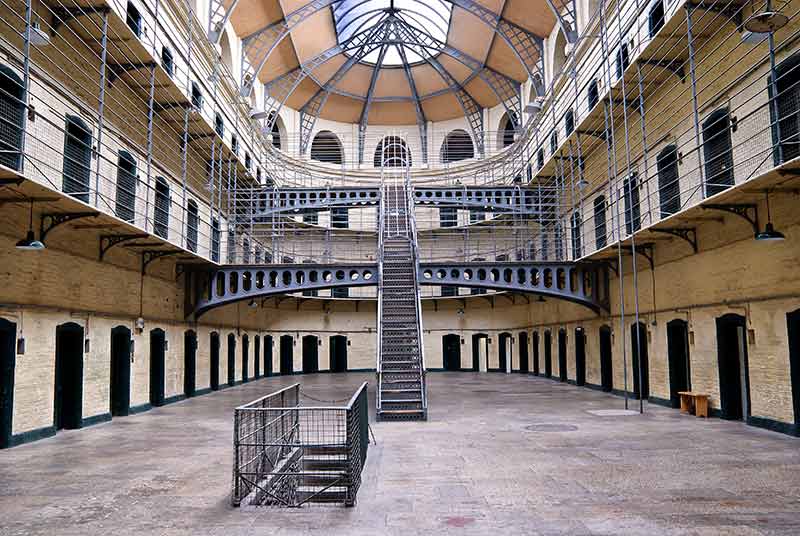
First opening its doors in 1796 as a County Gaol for Dublin, Kilmainham Gaol has now become a famous landmark in Ireland for visitors.
The building is a symbol for the rebellion of 1798 and the Irish Civil War in 1922.
The Gaol held many important people to the Irish Republican movement, as well as ordinary men, women and children.
The Gaol is open to the public to explore and is a Dublin landmark that often holds exhibitions by local artists.
4- The Temple Bar Pub (Co. Dublin)
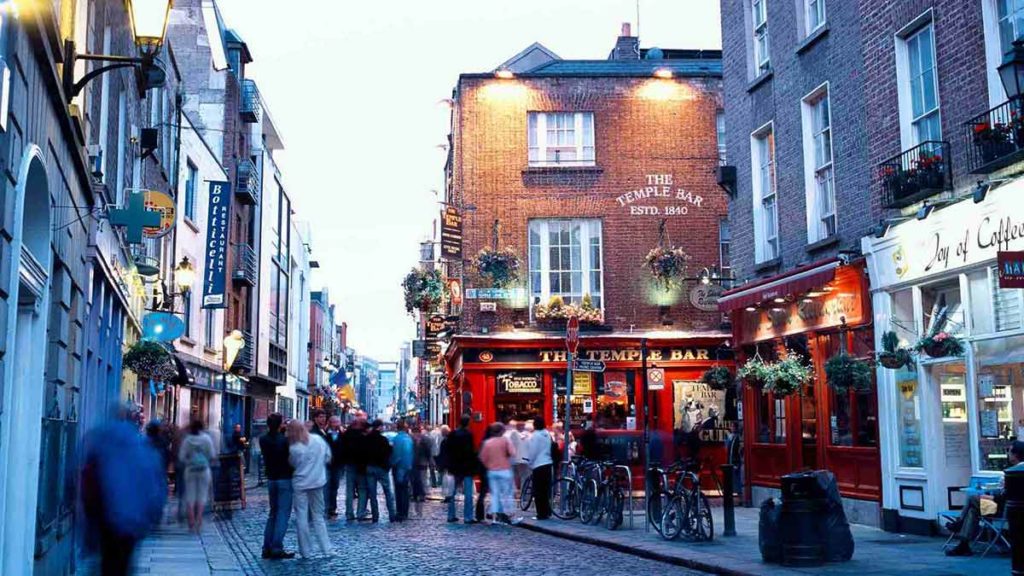
On the corner of Temple Lane and Temple Street is Temple Bar Pub, a pub established in 1840.
A true landmark of Dublin, Temple Bar Pub is famed for its incredible music performances from Irish musicians such as The Dubliners, to other bands and musicians such as Biffy Clyro.
Entering through its bold red facade from the bustle of the streets outside, the pub offers a haven of warmth, good beer and good food.
The pub is often tightly packed with low bar tables and stools and a vibe that can’t be beaten.
Order a pint of Guinness, sit back, and soak in the atmosphere.
For more amazing European Landmarks, read:
- 30 Spain Landmarks
- 20 Switzerland Landmarks
- 22 Germany Landmarks
- 35 London Landmarks
- 30 France Landmarks
- 20 Italy Landmarks
- 20 Greece Landmarks
- 20 Russia Landmarks
- 20 Scotland Landmarks
- 20 Ireland Landmarks
- 21 Wales Landmarks
- 20 Turkey Landmarks
- 20 England Landmarks
- 20 Hungary Landmarks
- 21 Romania Landmarks
- 20 Ukraine Landmarks
- 20 Athens Landmarks
- 20 Rome Landmarks
- 20 England Landmarks
- 20 Portugal Landmarks
- 20 Poland Landmarks
- 20 Iceland Landmarks
- 20 Bulgaria Landmarks
- 21 Croatia Landmarks
- 20 Bulgaria Landmarks
- 20 Austria Landmarks
- 21 Finland Landmarks
- 20 Sweden Landmarks
- 20 Denmark Landmarks
- 20 Belgium Landmarks
- 20 Netherlands Landmarks
- 20 Barcelona Landmarks
- 21 Czech Republic Landmarks
- 20 Landmarks in Paris
- 20 Landmarks in Liverpool
- 10 Istanbul Landmarks
Historic Landmarks in Ireland
5- Hill of Tara (Co. Meath)
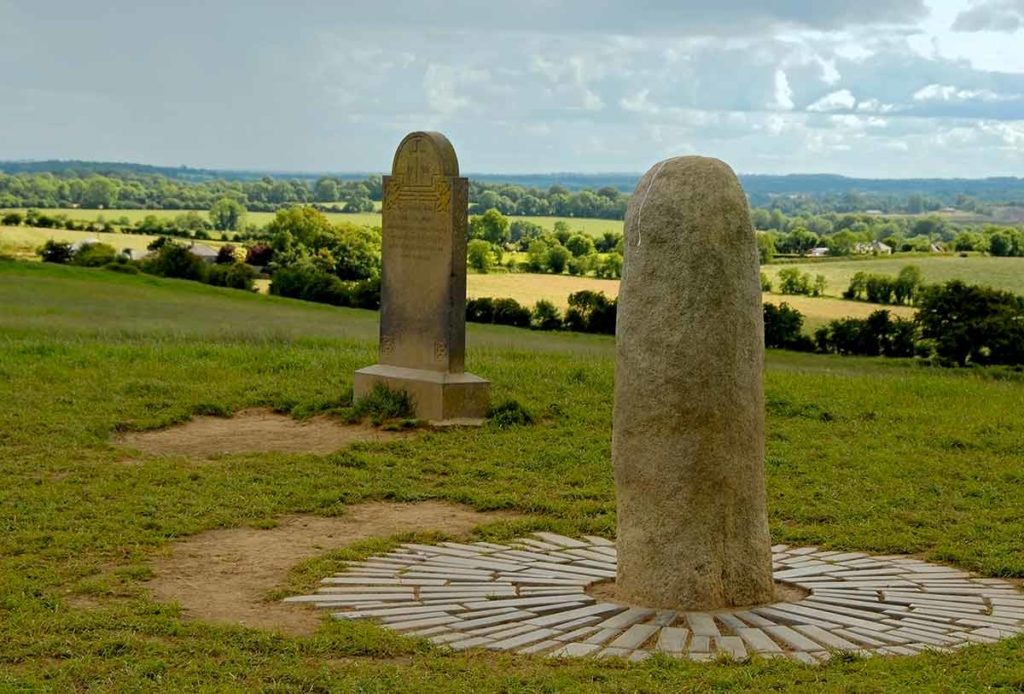
The Hill of Tara in Country Meath was a seat of ancient power for 142 kings who reigned in prehistoric times, making it a historic Irish landmark.
Irish mythology and ancient religions talk of the Hill of Tara as a sacred place, where the entrance to the underworld is found.
According to legend, Saint Patrick headed to the Hill to speak to the pagans, as this was one of their most sacred and powerful sites.
Hill of Tara even has links to the Arc of the Covenant, as a group of Israelites came in search of the Arc in the early 20th century.
On a clear day, you can see half of the counties of Ireland from the top of the Hill.
6- Newgrange (Co. Meath)
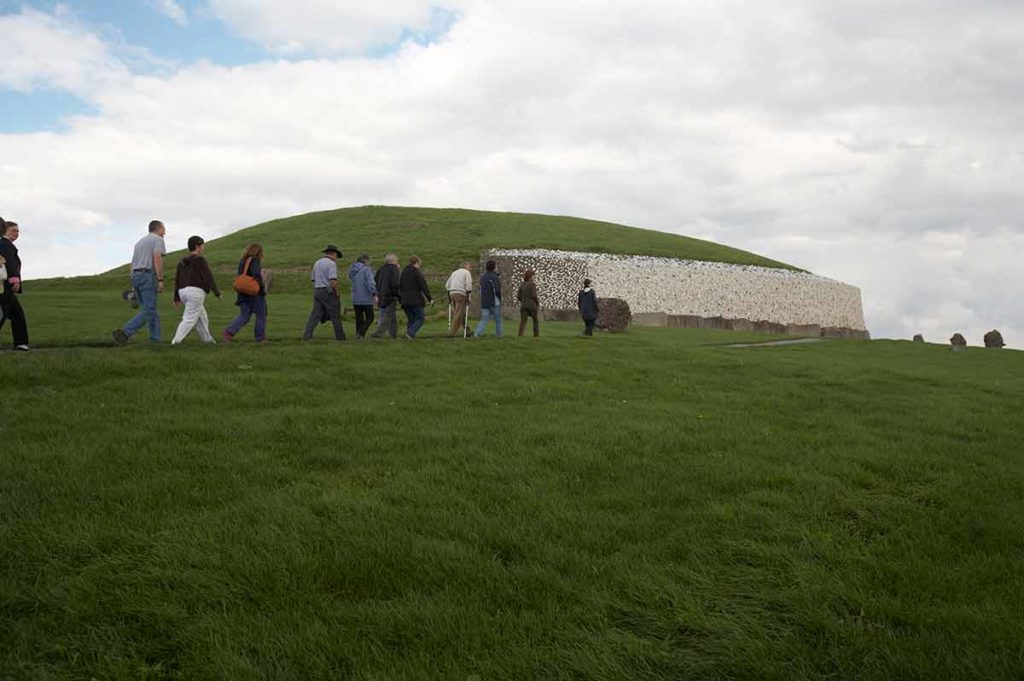
Nestled in the Boyne Valley of Ireland’s Ancient East lies Newgrange, a 5200-year-old tomb.
Built by Stone Age farmers, the burial mound was designed to reflect the mornings during the Winter Solstice as its passages and chamber follow the path of the rising sun.
Standing guard around the mound is 97 large stones, named kerbstones, engraved with neolithic artwork and symbols.
Newgrange has been named a UNESCO World Heritage Site and is a famous landmark of Ireland that is older than Stonehenge and the Great Pyramids of Giza.
7- Leap Castle (Co. Offaly)
Of all the castles in Ireland, Leap Castle is reportedly Ireland’s most haunted castle.
The castle was built in the 12th century, although this date is disputed amongst historians.
According to legend, Leap Castle was built on land previously occupied by Druids who used the area in their ceremonies.
The castle has had a very violent and bloody history starting with the death of one of the O’Bannon brothers, who died after jumping from a rocky outcrop where the castle now stands to try to claim the chieftainship of his clan through a feat of bravery.
Leap Castle moved to the O’Carroll clan in the 1500s and became a home for a fierce and brutal people.
The castle is, however, today a pleasant place for a stroll through the grounds, and for those interested in the paranormal, ghost tours are available.
Discover more Famous World Landmarks:
- 25 Australian Landmarks
- 20 New Zealand Landmarks
- 20 African Landmarks
- 21 Egyptian Landmarks
- 20 Jordan Landmarks
- 10 Tasmanian Landmarks
- 20 Antarctica Landmarks
8- Blarney Castle (Co. Cork)
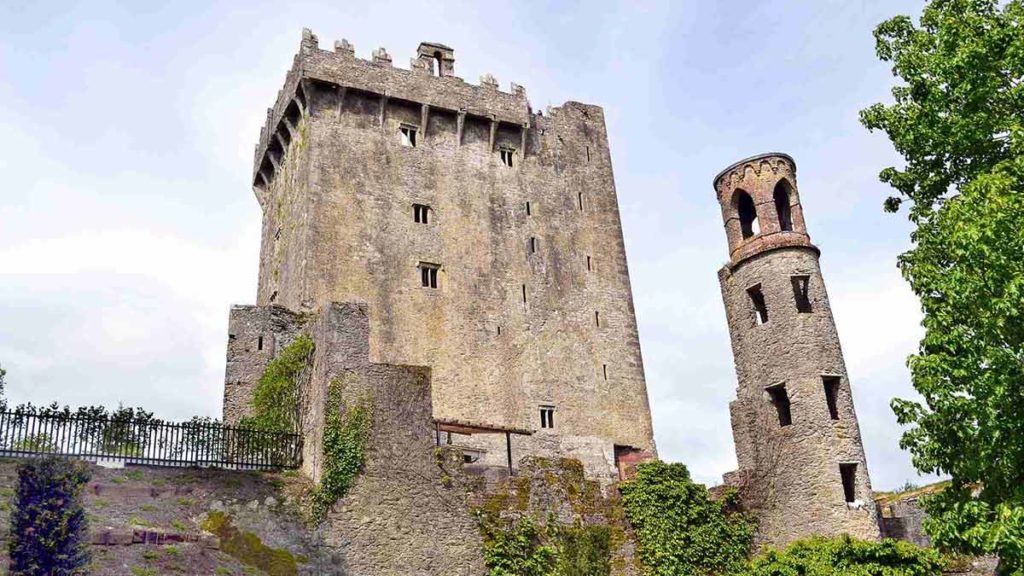
Blarney Castle is the third castle to be built on its current site, with the original castle erected from wood in around 1210 AD.
The castle standing today was built in 1446 by Dermot McCarthy, King of Munster.
Blarney Castle has an incredible history, and even has ties to Robert the Bruce and the battle of Bannockburn in 1314, as McCarthy supplied men to help fight the battle.
According to legend, Robert the Bruce gave McCarthy half of the Stone of Scone as a token of gratitude.
Most people know the stone as the Blarney Stone, which was added to the battlements of the castle and is another famous Ireland landmark in its own right.
Many visitors now go to kiss the Blarney stone, as they believe it will bring them the gift of eloquence.
9- The Monastic City of Glendalough (Co. Wicklow)
Glendalough in County Wicklow often called the valley of the two lakes, is an incredible natural draw for visitors to Ireland.
Within Glengalough are several Monastic sites forming a Monastic City.
The city features several churches and a 30m high round tower.
Founded by Saint Kevin in the 6th century, the city became one of the most important sites in Ireland.
The site survived many Viking attacks and Norman attacks, leaving the ruins open to visitors today.
When visiting the city, stop by the visitor centre, were archeological finds from the area are on display alongside a model of the site.
10- Saint Patricks Purgatory (Co. Donegal)
Named the world’s toughest pilgrimage that leads directly to the gates of Hell, Saint Patrick’s Purgatory is not for the faint-hearted.
The pilgrimage takes place on a small island in Lough Derg.
According to legend, Jesus showed Saint Patrick a cave on the island where the saint was subject to horrifying images of the punishments awaiting in hell.
A monastery built on the site was proof to Christian followers that there is indeed an afterlife.
Visitors to the island are usually on pilgrimage here, where they take a three-day sojourn of contemplation through the grounds while walking barefoot.
11- Rock of Cashel (Co. Tipperary)
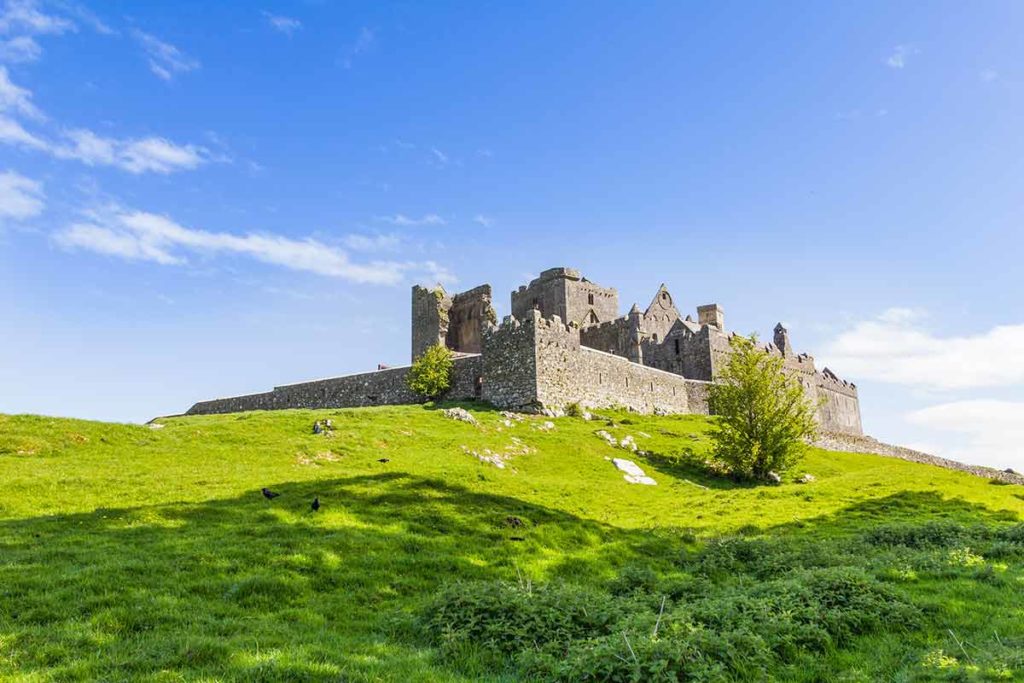
The Rock of Cashel or Saint Patrick’s Rock has a history steeped in mythology.
According to legend, the cathedral on the Rock originated when Saint Patrick banished Satan from a nearby Cave.
The site was, according to legend, where Aenghus the King of Munster was converted by Saint Patrick in the 5th century.
The buildings on the site today were built in the 12th and 13th century when the Catholic Church received the rock as a gift.
The buildings vary in architectural style, with elements from Hiberno-Romanesque and Germanic styles.
The Rock has an exceptional collection of medieval architecture which is on display for visitors.
12- The English Market (Co. Cork)
Originating from the 1600s, The English Market in Cork has been trading to the public since 1788.
The market offers a wealth of delicacies from the traditional food from the area, to world foods and unusual treats.
Many of the stalls at the market are family run and have been passed down through the generations.
Traditional fare available at the market includes buttered eggs and battlebord (a dried salted fish) and drisheen (blood sausage).
Make like the locals and head here for a bite to eat, shop and meet with friends.
Also read:
- 20 USA Landmarks
- 23 Canada Landmarks
- 22 Ohio Landmarks
- 21 Arizona Landmarks
- 21 Minnesota Landmarks
- 21 Oregon Landmarks
- 21 Illinois Landmarks
- 21 Colorado Landmarks
- 21 Georgia Landmarks
- 21 Michigan Landmarks
- 23 Los Angeles Landmarks
- 21 Washington Landmarks
- 21 Maryland Landmarks
- 20 Manitoba Landmarks
- 20 Kansas Landmarks
- 21 New Mexico Landmarks
- 20 Idaho Landmarks
- 20 Montana Landmarks
- 20 Oklahoma Landmarks
- 21 Wisconsin Landmarks
- 20 Tennessee Landmarks
- 21 Iowa Landmarks
- 20 Alaska Landmarks
- 20 Miami Landmarks
- 21 West Virginia Landmarks
- 21 Kentucky Landmarks
- 20 Louisiana Landmarks
- 21 Arkansas Landmarks
- 20 Cincinnati Landmarks
- 20 San Antonio Landmarks
- 25 Indiana Landmarks
- 21 New York Landmarks
- 20 Texas Landmarks
- 21 Boston Landmarks
- 20 Florida Landmarks
- 20 Hawaii Landmarks
- 5 South Dakota Landmarks
- 21 Pennsylvania Landmarks
- 23 New Jersey Landmarks
- 21 Virginia Landmarks
- 21 North Carolina Landmarks
- 21 Utah Landmarks
- 21 Nevada Landmarks
- 20 Massachusetts Landmarks
- 20 Washington DC Landmarks
- 20 Vermont Landmarks
- 20 Nebraska Landmarks
- 20 North Dakota Landmarks
- 21 Missouri Landmarks
- 20 Rhode Island Landmarks
- 21 Maine Landmarks
- 21 Connecticut Landmarks
- 20 San Diego Landmarks
- 20 Landmarks In South Carolina
- 20 Mississippi Landmarks
- 20 Las Vegas Landmarks
- 20 Dallas Landmarks
- 20 Houston Landmarks
- 20 Seattle Landmarks
Natural Landmarks in Ireland
13- Killarney National Park (Co. Kerry)
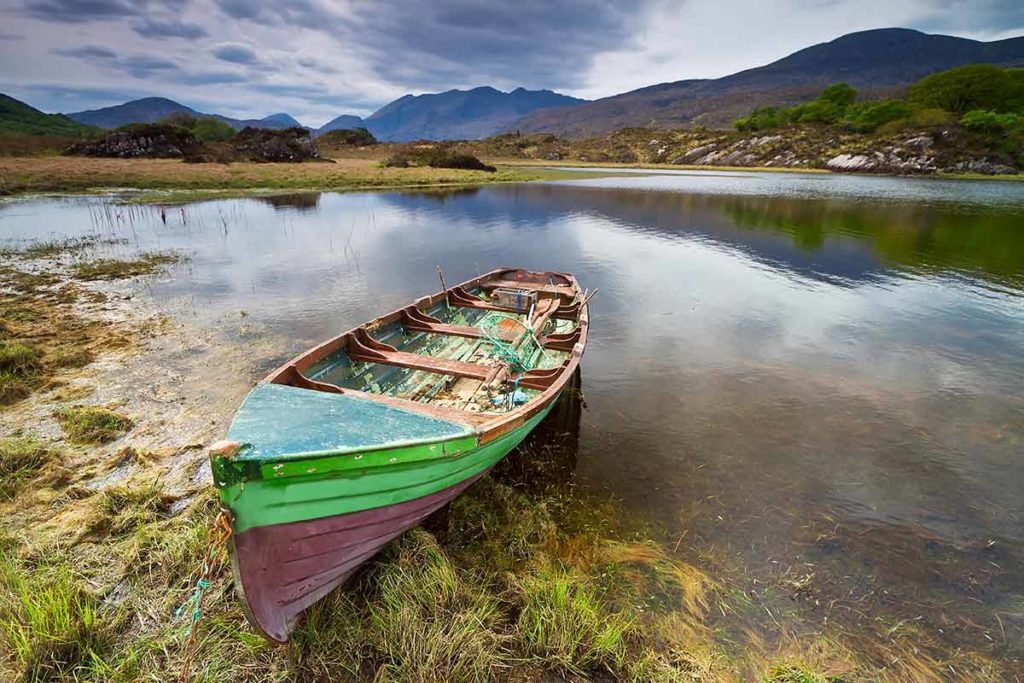
Killarney National Park is home to 26,000 acres of mountains, castles, rivers, ancient landmarks and even an island home to swimming deer.
The park is a stunning place to take a walk through to explore its hidden treasures such as the native forest which is home to several ancient trees and many different species of plants not found anywhere else.
You could easily spend several days at the park and still have places to explore.
If nature isn’t for you, the park offers a range of outdoor sports including canyoning and hiking.
14- The Wild Atlantic Way
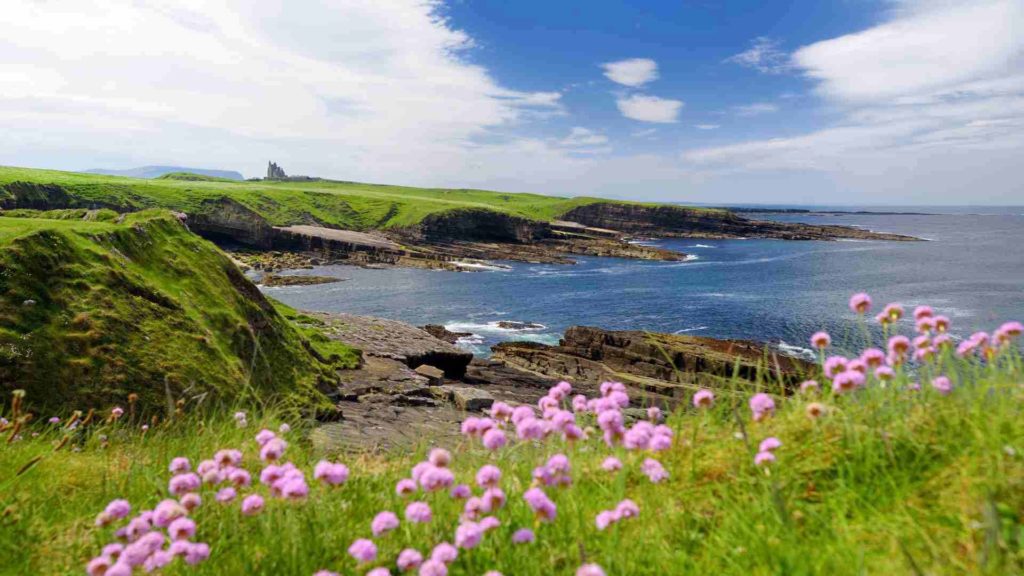
The Wild Atlantic Way is an incredible stretch of coastline running from Inishowen Peninsula in the north to Kinsale, County Cork, in the south.
The route offers up some of the best natural sights Ireland has to offer.
The route is 1600 miles long and takes visitors through stunning countryside, clifftop walks and into quaint villages.
Ancient monuments are scattered along the route, with many origin stories lost in time.
There are 14 stages to complete the whole route with, of course, many picturesque stops along the way to break up the journey.
It is, however, well worth the 1600 mile trek to take in some of the most enchanting and wild sights in this magical country.
15- Cliffs of Moher (Co.Clare)
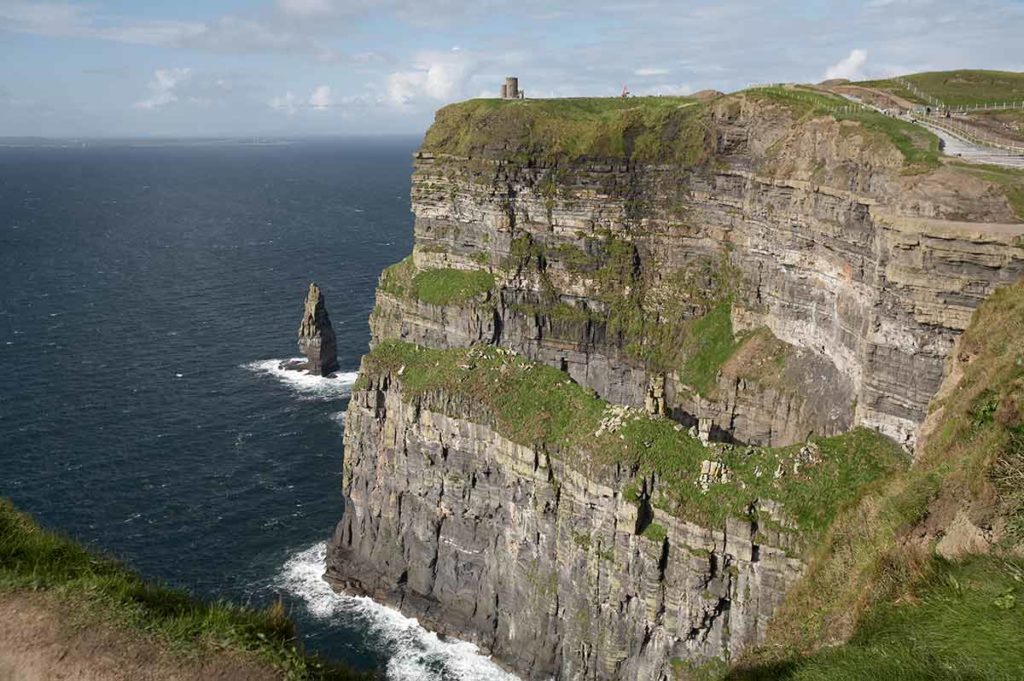
The Cliffs of Moher in County Clare is located along the Wild Atlantic Way.
For over 350 years, the cliffs have stood watch over the ocean here, creating breathtaking views over the jagged, moss-covered rocks and the waves below.
Part of the UNESCO Global Geopark, they represent a region with incredible geology.
The cliffs are, however, more than just a view.
Over 20 species of seabirds nest here and rare flora including Sea Pink and Cat’s Eat are found here.
More Landmarks in Asia:
16- Ballymastoker Bay (Co. Donegal)
Part of the Wild Atlantic Way, Ballymastoker Bay is an incredible stretch of sandy beaches on the western shore of Lough Swilly.
The beach has been awarded the title of ‘second most beautiful beach in the world’ by Observer Magazine, and it is easy to see why.
On a clear day, the waters here are crystal clear and move from white foam where the waves break to an incredible shade of blue.
Beyond the beach are green meadows and of course the cliff faces that overlook the bay.
17- The Ring of Kerry (Co. Kerry)
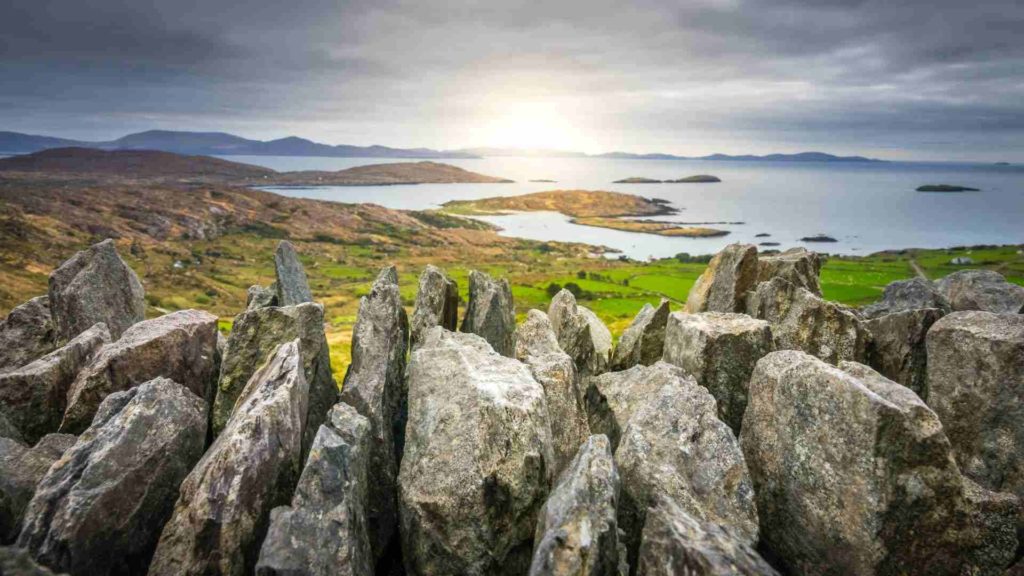
The Ring of Kerry is a trail following the contours of the land through County Kerry.
The route is part of the Wild Atlantic Way, but has attracted visitors for hundreds of years, and leads visitors through an unspoilt part of Ireland, luring them in with its beautiful scenery.
The landscape here is varied; from Rossbeigh Strand and its rocky bay to the Killarney lakes and mountains.
The Ring of Kerry also offers a glimpse into the ancient heritage of the land, with Iron Age Forts and a landscape carved out during the last Ice Age.
18- Skellig Islands (Co. Kerry)
The Skellig Islands are off the coast of Portage in South West Kerry. Skellig Michael, the larger of the Skellig Islands, is accessible only by boat.
At the top of the rocks on the island sits a well preserved 6th Century monastery and settlement.
The monks who resided here lived simply in beehive-shaped huts which are still standing today.
After the island was abandoned in the 13th century, it became a place of pilgrimage for Catholics.
Another draw to these stunning islands is the wildlife here.
Many birds live on and around the islands, and in late spring, puffins can be sighted on the small Skellig island.
19- Aran Islands
The Aran Islands consists of three islands and are often referred to as the ‘Islands of Saints and Scholars’.
The islands are important areas of Celtic history due to their geological formations and historical monuments which includes prehistoric forts.
On the islands, the Irish Gaelic language is still spoken here.
The islands feature four stone forts which date from the Bronze and Iron Age.
Head to the Worm Hole, a natural rectangular pool into which the sea flows, or visit the Inis Mor seal colony where on a good day, seals can be seen on the rocks sunbathing.
20- Benbulben (Co. Sligo)
Benbulben is part of the Dartry Mountains and was formed during the ice age.
The mountain is a haven for walkers and climbers and is steeped in mythology.
One such legend claims that the mountain is the only place in Ireland where fairies are visible.
On the north face of Benbulben is a ‘black patch on a bare hollow’ that the locals often refer to as a fairy door, where fairies can come through to the mortal world, and provide good weather for the coming days.
The mountain offers spectacular views of the surrounding landscape and Sligo Bay below.
Literary enthusiasts often head here to pay homage to the poet W.B.Yeats who is buried in a graveyard below the mountain.
For more things to do in Ireland read:
Looking for more to do in Ireland? Check these out:
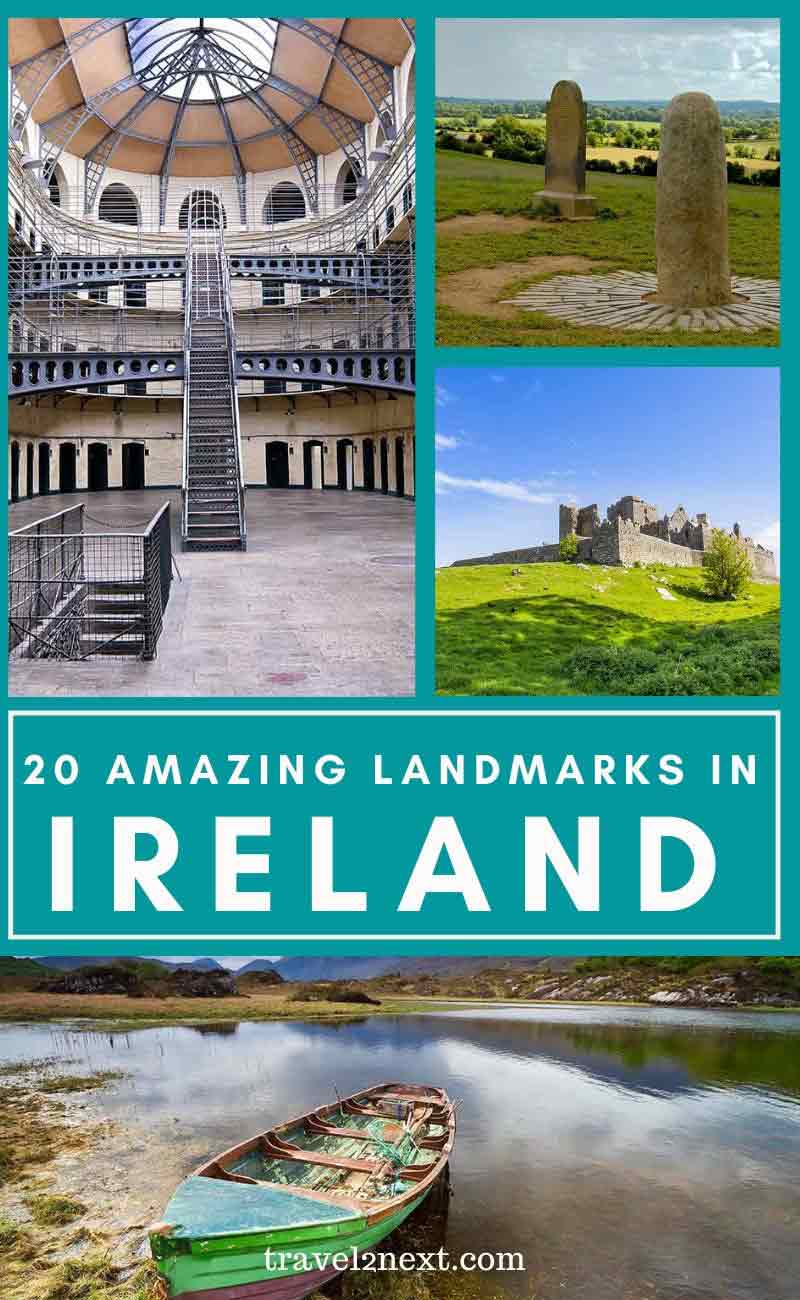
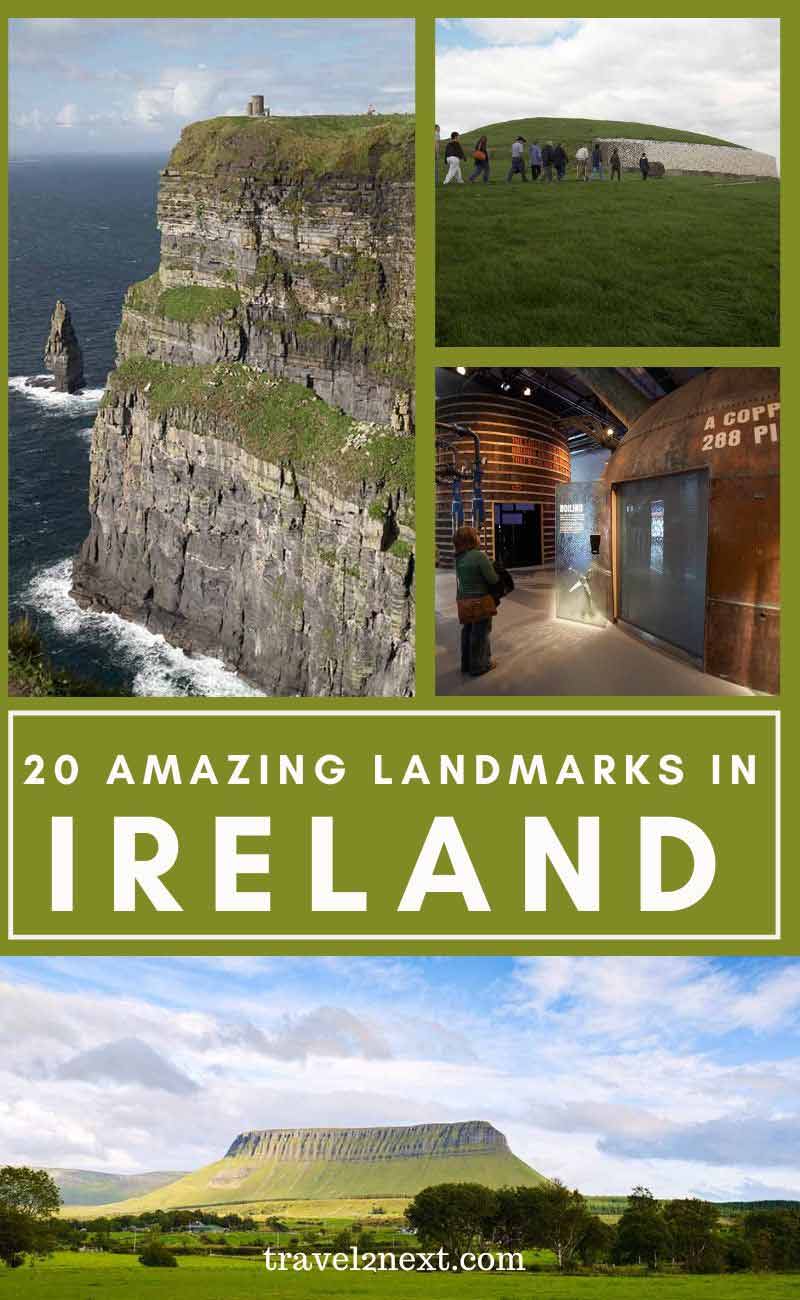
Plan Your Trip

Rent A Car – Find the best car rental rates at Discover Cars. They compare car hire companies to provide you with the best deal right now.

Find A Hotel – If you’re curious about this article and are looking for somewhere to stay, take a look at these amazing hotels.

